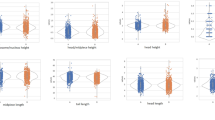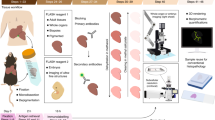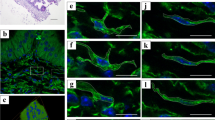Abstract
IT was pointed out previously that in the unstained living human spermatid the Golgi apparatus is sometimes discernible with bright-ground illumination, as an area slightly differing in refractive index from the remainder of the cytoplasm1. Recently, I have been able to confirm and extend these observations with the phase-contrast microscope. This instrument was of the phase-accelerating or positive type, so that dark and light regions in the image indicated higher and lower refractive indices, as a rule.
This is a preview of subscription content, access via your institution
Access options
Subscribe to this journal
Receive 51 print issues and online access
$199.00 per year
only $3.90 per issue
Buy this article
- Purchase on Springer Link
- Instant access to full article PDF
Prices may be subject to local taxes which are calculated during checkout
Similar content being viewed by others
References
Oettlé, A. G., S. Afr. J. Sci., 37, 239 (1940).
Gatenby, J. B., and Beams, H. W., Quart. J. Mic. Sci., 78, 1 (1936).
Baker, J. R., Quart. J. Mic. Sci., 85, 1 (1944).
Author information
Authors and Affiliations
Rights and permissions
About this article
Cite this article
OETTLÉ, A. Golgi Apparatus of Living Human Testicular Cells Seen with Phase-Contrast Microscopy. Nature 162, 76–77 (1948). https://doi.org/10.1038/162076a0
Issue Date:
DOI: https://doi.org/10.1038/162076a0
This article is cited by
-
Cytoplasmic organelles in the male germ-cells of Vaginula maculata (pulmonata, mollusca)
Zeitschrift f�r Zellforschung und Mikroskopische Anatomie (1954)
-
Das Phasenkontrastmikroskop in medizinischer Forschung und Diagnostik
Klinische Wochenschrift (1952)
Comments
By submitting a comment you agree to abide by our Terms and Community Guidelines. If you find something abusive or that does not comply with our terms or guidelines please flag it as inappropriate.



